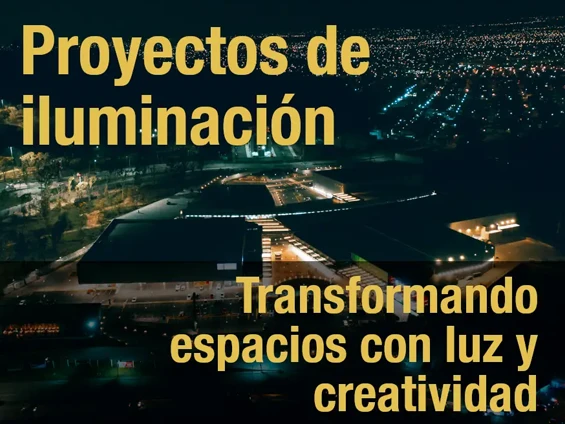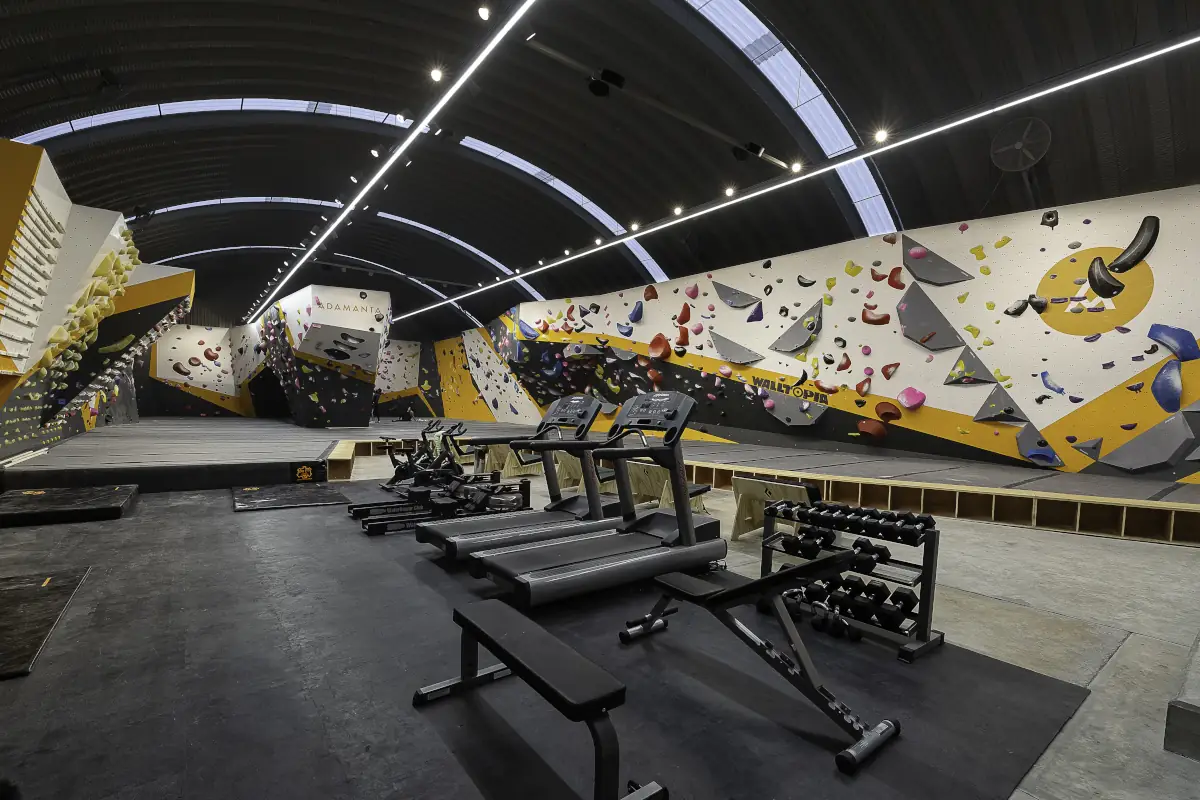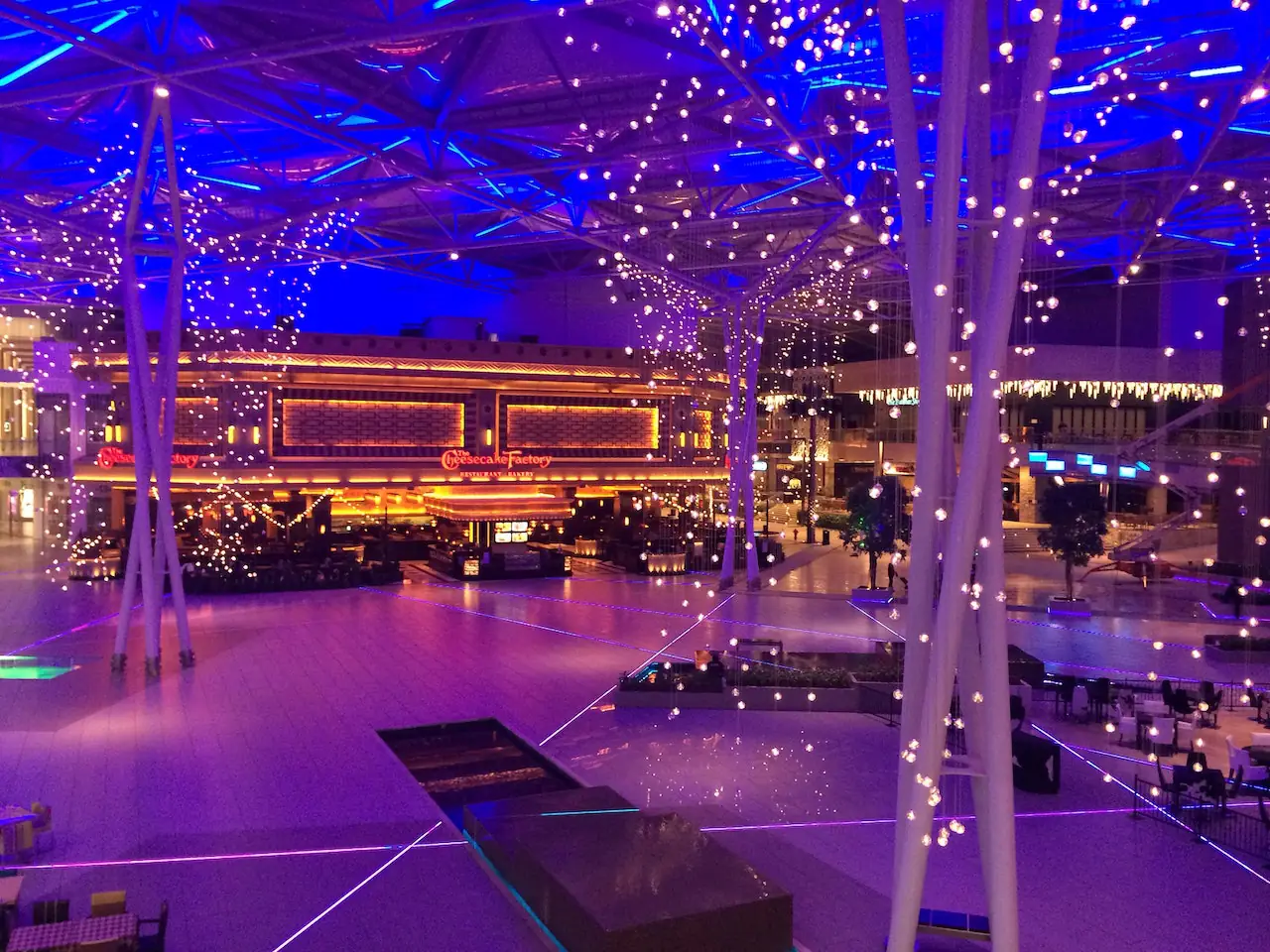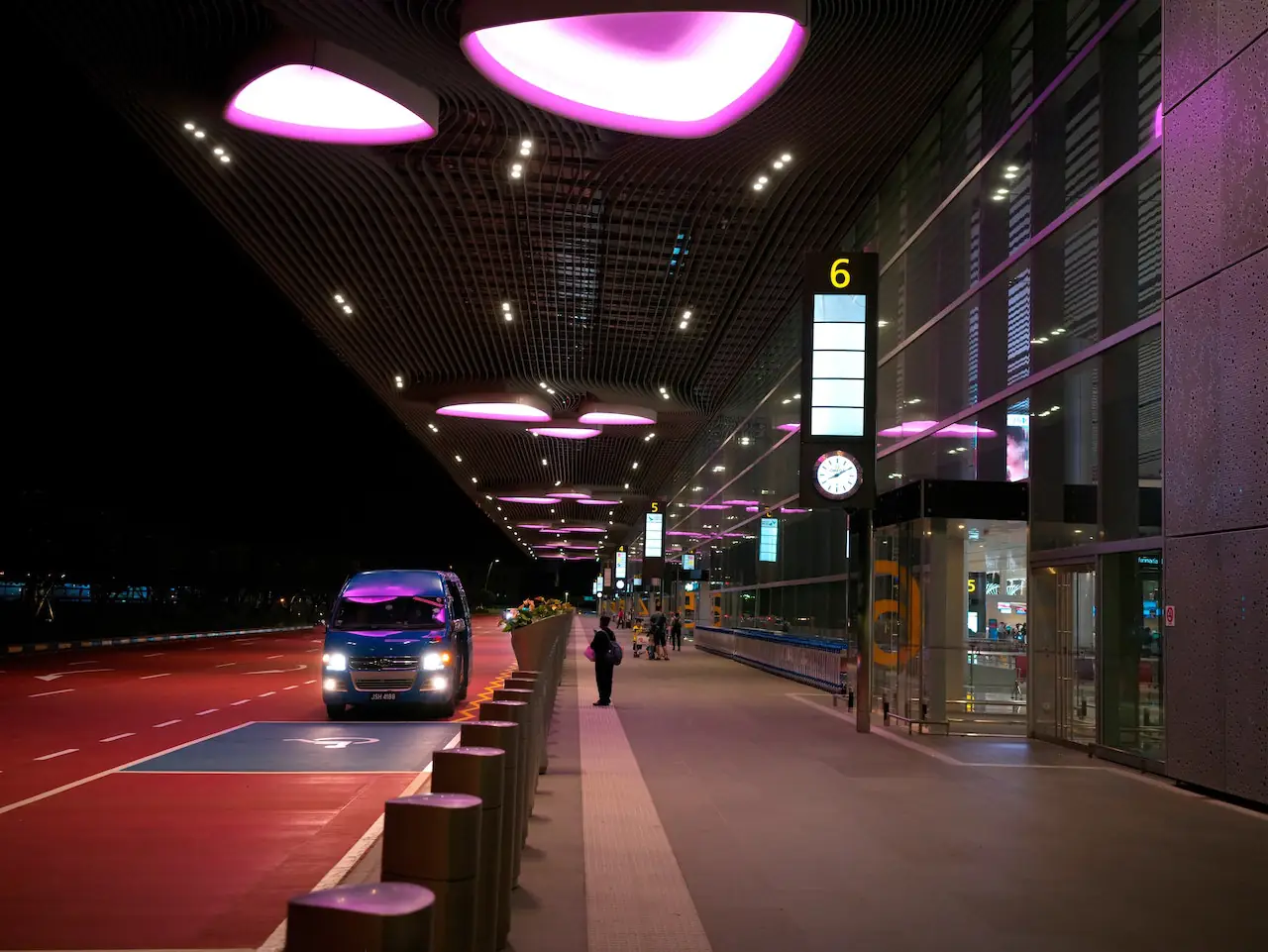A lighting project is a detailed plan that is developed to design and execute the lighting system in a specific space. It is a fundamental tool to guarantee adequate and efficient lighting in any environment, be it a residential building, an office or a commercial area. In addition, it allows creating attractive and functional environments, highlighting the architecture and improving the visual experience of those who occupy that space.
The primary goal of a lighting project is to provide adequate, efficient, and aesthetically appealing lighting to meet the needs of that particular space.
Table of Contents
- Introduction
- A lighting project generally involves the following steps:
- Some benefits of a lighting project
- Key phases of a lighting project
- Scope of services: Lighting specifications
- Visualization: Understanding your project
- Lighting Design Concept: Balance between aesthetics and functionality
- Relevant considerations of lighting calculations
- Final design: From planning to execution
- Summary, lighting project

Introduction
A lighting project seeks to provide adequate, efficient, and aesthetically appealing lighting to meet the needs of the particular space. This involves evaluating the requirements, designing the lighting system, selecting the right luminaires and equipment, studying energy efficiency, planning the installation, implementing and commissioning the system, performing maintenance and monitoring, and using efficient luminaires.
The use of efficient luminaires, such as high-efficiency lamps, can reduce energy consumption and environmental impact, as well as offer greater durability. It is important to have the help of a professional to ensure that the lighting project is successful and shines in all aspects.
Some benefits of a lighting project include adding value to the building, enhancing its geometry and design, modulating behavior with light, saving energy, optimizing lamp selection and maintenance, achieving visual consistency, and saving time and money when choosing lighting fixtures. proper lighting.
In summary, a lighting project involves creating an optimal lighting system that meets the functional and aesthetic requirements of a specific space, contributing to its value and transforming the experience in that place.
A lighting project generally involves the following steps:
1. Assessment of requirements
The lighting needs of the space are determined based on its use, size, function, style and specific requirements. This involves taking into account factors such as the amount of light required, lighting distribution, desired visual effects, and energy efficiency.
2. Design of the lighting system
At this stage, a detailed design of the lighting system is created. This includes the location and type of luminaires, the arrangement of accessories, the calculation of the necessary illuminance and the choice of suitable light sources.
3. Selection of luminaires and equipment
Luminaires and lighting equipment that meet the project requirements are chosen. This can include lamps, bulbs, LEDs, drivers, dimmers, and other components necessary for the lighting system.
4. Energy efficiency study
The energy efficiency of the lighting system is evaluated to guarantee optimal energy consumption. This may involve the use of efficient lighting technologies such as energy efficient LEDs, motion sensors, and automated lighting control systems.
5. Installation planning
A detailed plan for the installation of the lighting system is developed. This includes wiring routing, breaker placement, coordination with other electrical systems, and selection of contractors to carry out the installation.
6. Implementation and start-up
The installation of the lighting system is carried out according to the established plan. After installation, tests and adjustments are made to make sure that the system works correctly and meets the established lighting requirements.
7. Maintenance and monitoring
Once installed, regular maintenance of the lighting system must be carried out to ensure its optimal operation. In addition, monitoring can be done to assess the effectiveness of the lighting system and make adjustments if necessary.
8. Use efficient lighting
High efficiency lamps are highly recommended, since the device provides more durability, it does not emit or receive heat. In addition, they reduce energy consumption and environmental impact.
The lifespan of traditional bulbs is 1200 hours, while the lifespan of high-efficiency bulbs can reach 30,000 to 50,000 hours, so it is no longer just about improving energy efficiency, but about saving money and materials to a great extent.
9. Go to a professional
If you want your lighting project to shine, getting the help of a professional is the best way to make sure everything goes smoothly.
The Pleus Energy project team is enthusiastically involved in all lighting projects and strives to achieve the best results, regardless of the size of the project.
Driving and proximity are its hallmarks.

Some benefits of a lighting project
The lighting project consists of developing an analysis of each space, taking into account its lighting characteristics according to usage habits.
- The project had to integrate light into the building, taking natural light into account and seeing it as an efficient lighting system.
- Add value to the building and enhance the geometry, design and materials of the piece.
- Transforming a room creates feelings.
- We can modulate behavior with light.
- Energy savings in the factory due to the correct selection of equipment and regulation of circuits.
- Determine the points of light according to the needs of each room.
- Optimize lamp selection and maintenance.
- Aesthetic value, visual coherence of the work.
Save time and money by choosing the perfect lighting fixture for all areas of your project.

Key phases of a lighting project
Discover the key phases of an indoor or outdoor lighting project and how they can save you cost and energy.
Phase 1: Planning for success
Proper planning is essential before making any lighting purchase. By correctly projecting and planning the lighting of a space, you will achieve significant benefits.
You will avoid oversizing the installation, you will adjust energy consumption to minimum levels without sacrificing the quality of light and you will reduce maintenance costs. To achieve these objectives, it is crucial to analyze several factors, such as the optimal distribution of light points, the required lighting levels, the choice of the appropriate color temperature and the prevention of glare.
Significant benefit: A good initial lighting design can save you costs in the long run, both in investment and energy consumption.
Phase 2: Hire a lighting project
Hiring a professional lighting project has numerous advantages. According to the Project Management Institute (PMI), companies that do not efficiently manage their projects can spend up to 13 times more.
Lack of planning and missed deadlines lead to duplication of work, budget overruns, and wasted time, which in turn affects profitability. A well-structured and executed lighting project guarantees you a clear direction, avoiding working on the fly and ensuring optimal results.
Featured benefit: A professional lighting project maximizes efficiency, reduces costs and optimizes profitability.
Phase 3: Choose the color of the light
The tonality of the light is determined by the color temperature, measured in degrees Kelvin (K). A higher indicator means a cool white light, while a lower indicator indicates a warmer light.
For example, a daylight fluorescent lamp has a color temperature of 6,000 K, while a conventional incandescent bulb has a color temperature of 2,700 K. Furthermore, the color tone influences the light output of a lamp, since a higher Kelvin index produces a greater number of lumens, which is the unit of measurement of the luminous flux emitted by a light source.
Significant benefit: Choosing the right light tonality improves lighting quality and provides the desired light output.
Phase 4: Energy saving
Energy prices continue to rise, putting pressure on the economics of lighting systems. Many older systems are deficient in terms of energy efficiency, with outdated luminaires, inefficient light sources, and a lack of lighting management.
To achieve maximum energy savings, it is recommended to implement an LED lighting system along with a daylight harvesting strategy and an intelligent control system. This allows users to choose from a variety of control tools, from manual switches to automated solutions, providing greater user convenience and eliminating losses associated with manual control.
Significant benefit: By using an LED lighting system and smart strategies, you can save significantly on energy costs and improve the quality of light.
In summary, a well-planned and executed lighting project can generate investment savings, reduce energy costs and improve lighting quality. By following the key phases, from planning to the appropriate choice of light tonality and the implementation of energy saving measures, you will be ensuring optimal results and maximizing the efficiency of your lighting system.
Remember that having professionals in the field of lighting can make a difference in the effectiveness and success of your project. Don’t underestimate the power of well-designed lighting and take advantage of all the benefits that come with it. Start lighting your space efficiently and brilliantly with Pleus today!
Scope of services: Lighting specifications
In this section, I will take care of gathering the necessary information and establishing the lighting specifications for your project. By understanding the unique characteristics of each space and the specific needs of clients, I will be able to design a precise and practical lighting solution.
Here are some important points to consider:
- Description of the space to be illuminated.
- Type of activity to be carried out in the space.
- Lighting requirements according to appropriate standards and levels.
- Type of light source and optical system.
- Dimensions of the luminaires.
Visualization: Understanding your project
Light plays a fundamental role in spatial perception and in the creation of visual environments. As lighting designers, we use visualization tools to help you understand what your project will look like. Here is what we offer:
Lighting design concept:
We create a unique and personalized concept that highlights the architecture and enhances the exceptional details of the space.
2D Visualization:
We use specialized software to design and model proposals in 2D format, such as DWG and PDF, so you can visualize different options.
3D Visualization:
We create realistic three-dimensional models that allow you to experience how your space will look with the proposed lighting solution. You will be able to see light and shadow effects, architectural details and more.
Lighting Design Concept: Balance between aesthetics and functionality
There is no one-size-fits-all solution for lighting projects. It is important to find the perfect balance between aesthetics, functionality and economy. Our goal is to create a lighting design that brings the space to life and provides a pleasant atmosphere, while avoiding unnecessary inadequacies and costs.
We consider all aspects of the space and its use when creating a custom lighting concept.
2d Visualization: Explore your options
To help you make informed decisions, we will ask you to provide us with a photograph of the space and the precise dimensions. We will use this information to design and model various proposals in 2D. So you can visually evaluate the different options and choose the one you like best.
3d Visualization: Experience your space in 3d
If you want a more realistic representation of your project, we offer 3D visualizations. These models will allow you to view your space from different angles and appreciate the effects of light and shadow, as well as prominent architectural details. You will get a clear vision of what your space will look like once the lighting solution is implemented.
Light Calculations: Precision and efficiency
In this section, we will focus on the lighting calculations necessary to ensure adequate lighting in your project. These calculations allow us to determine the amount of light needed, the optimal distribution of the luminaires and their correct location. Here I detail more information:
Daylight Calculations: Taking advantage of daylight
Natural light is essential for the well-being of people, and that is why we strive to adapt artificial lighting to your properties. Having adequate natural lighting not only fulfills a purpose, but also becomes an obligation. In addition, it can generate significant energy savings.
We use specialized software to calculate the availability of natural light in your space. These calculations are based on the uniform distribution of illuminance in the celestial vault and the uniformity of the sky on cloudy days. By knowing these factors, we can plan artificial light that will complement natural light efficiently.
Artificial Light Calculations: Optimizing lighting
In addition to natural light, it is important to accurately calculate artificial lighting. This involves determining the proper number and location of luminaires, as well as choosing the optimum efficiency and distribution of light. When all these parameters are in harmony, high-quality lighting is achieved.
We carry out specific lighting calculations for different types of spaces, such as supermarkets, shopping centers, commercial premises, industries, offices, educational centers, hotels, restaurants, sports centers, clinics, hospitals, public lighting, exteriors, art galleries and more. These calculations allow us to offer you lighting solutions adapted to the needs of your project.

Relevant considerations of lighting calculations
Here is a list of relevant points related to lighting calculation services:
- Natural light calculations to take advantage of daylight and generate energy savings.
- Artificial light calculations to determine the optimal number and location of luminaires.
- Choosing the right light distribution and efficiency to achieve high quality lighting.
- Specific calculations for different types of spaces, such as supermarkets, industries, offices, among others.
- Specialized software used to simulate lighting and assess the quality of the proposed solutions.
Final design: From planning to execution
Once the lighting calculations have been completed and the design concepts defined, we move on to the final design stage. At this stage, we will develop the complete lighting project, which includes the necessary work calculations. In addition, at Pleus we will take care of supplying the required luminaires.
Lighting Services: Improving Work Spaces and Creating Optimal Environments
Industry:
Improving performance and well-being in workplaces, manufacturing, warehousing and outdoors.
Proper lighting in industrial settings increases productivity and reduces the risk of injury. We use lighting calculations to determine the optimal lighting in each work area.
Offices:
Guaranteeing visual comfort and acuity for long periods of time.
Adequate lighting in administrative buildings improves the visual comfort of workers.
We carry out artificial lighting calculations to achieve optimal lighting in office spaces.
Education:
Creating environments conducive to learning in educational facilities.
Lighting influences students’ ability to concentrate and learn.
We provide artificial lighting that favors an optimal educational environment.
Sports Facilities:
Adequate lighting for sports and relaxation areas.
The lighting calculations are adapted to the needs of each sports space.
Requirements vary based on use and intensity of sports activities.
Street Lighting:
Improving safety and the feeling of well-being in public spaces.
Supplementary artificial lighting in streets and public spaces ensures safety.
Proper lighting calculations are essential to achieve effective results.
Hotels and Restaurants:
Creating attractive and comfortable environments for clients and staff.
Lighting in hotels and restaurants creates a cozy atmosphere.
We provide adequate lighting for both clients and staff.
Clinics, Hospitals and Health Centers:
Prioritizing the comfort and well-being of patients and staff.
Proper lighting in healthcare spaces improves comfort and makes tasks easier.
We make precise calculations to ensure optimal lighting in these environments.
Architectural and Exterior Lighting:
Highlighting the beauty and life of spaces.
Architectural lighting brings buildings, statues and objects to life.
We carry out lighting calculations to create impressive visual effects.
Additional Services: Guaranteeing quality and operation
Final Design:
Presentation of project results and recommendations.
The technical report includes calculations and lighting levels per space.
We offer recommendations and conclusions based on the criteria used.
Support:
Assistance in the installation and connection of lighting systems.
We take care of the installation and connection of electrical components.
We have verified professionals to ensure a safe installation.
Cabling:
Use of high-quality wiring for fault-free operation.
Quality wiring is critical to a reliable lighting system.
We make sure that all fixtures have the necessary components for proper installation.
Installation of Luminaires:
Guaranteeing a correct and safe installation.
The installation of lighting systems requires experience and professionalism.
Our verified professionals handle the installation safely and without errors.
Programming:
Adjustment and control of the lighting system.
After installation, we program the luminaires and control devices.
We create custom control programs and run tests to verify functionality.
Technical Supervision:
Ensuring an error-free lighting system.
Our specialists offer technical supervision at every stage of the project.
We guarantee that all components are perfectly installed and configured for optimal operation.
Lighting Measurement:
Knowledge of energy consumption and potential savings.
We carry out measurements to determine the annual consumption of the lighting system.
We provide information on savings opportunities and potential improvements by rebuilding.
Technical Training and Education:
Sharing knowledge and training users.
We offer full training to manage our products.
We provide long-term training and seminars for effective use of lighting systems.
Summary, lighting project
In summary, a lighting project involves the design, selection, installation and maintenance of a suitable lighting system for a specific space, taking into account both functionality and aesthetics.
At Pleus, we understand the importance of a well-designed, efficient lighting system, and we pride ourselves on offering a wide range of professional services ranging from consulting and design to installation and technical support.
Our focus on quality, innovation and customer satisfaction distinguish us as a leader in the field of lighting. We work closely with our clients to understand their needs and offer customized solutions that fit their objectives and budgets.
If you are looking to transform your spaces with adequate lighting that improves the environment, efficiency and safety, we invite you to consult our services at Pleus. Our team of experts is ready to provide advice and support at every stage of the process, from initial design to final implementation.
Don’t settle for ordinary lighting. Find out how our professional services can make a difference in your work environment. Contact us today and let us light up your world with quality and excellence.

